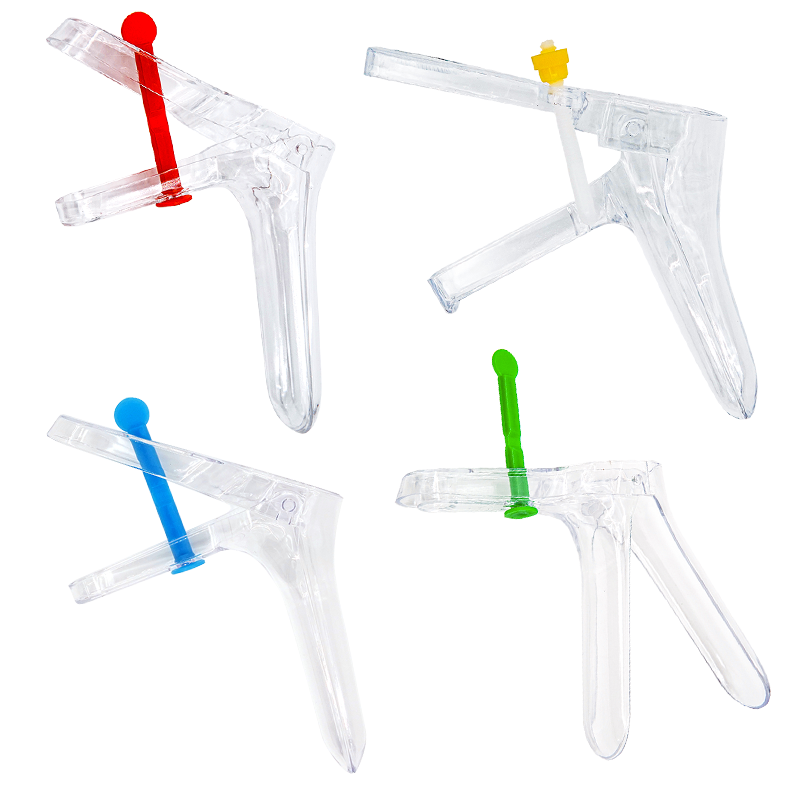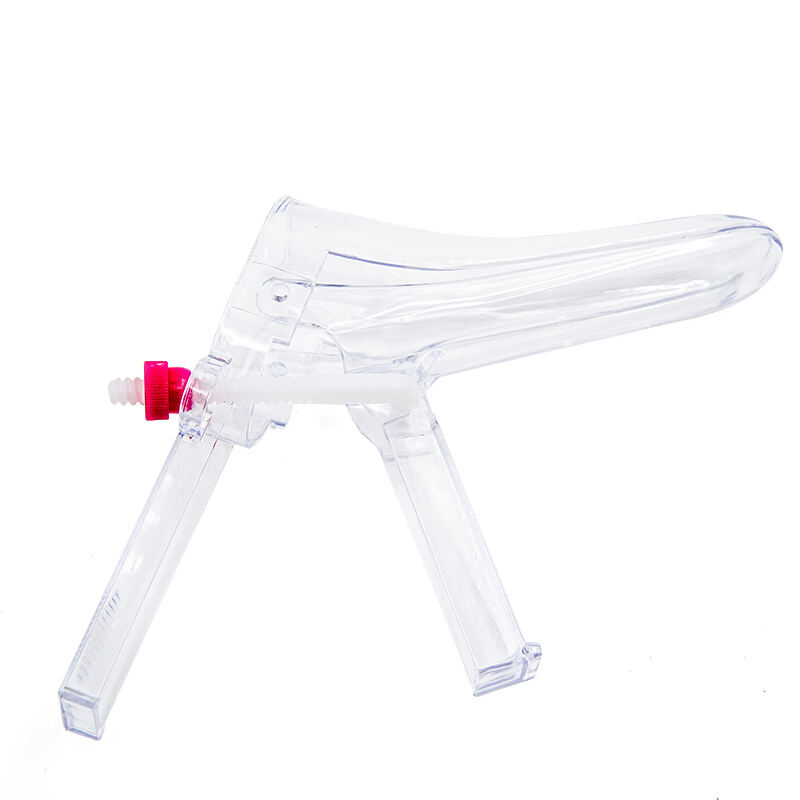Osnovni vodnik za izbiro vaginalnih spekulov za medicinske strokovnjake
Medicinski strokovnjaki razumejo, kako pomembno je imeti prave orodja za zagotavljanje najboljše oskrbe bolnikom. The vaginalni spekulum , temeljni instrument pri ginekoloških pregledih, je na voljo v različnih vrstah in specifikacijah. Pravilna izbira spekula zagotavlja učinkovitost zdravnika ter udobje bolnice med pregledom.
Ta obsežni priročnik raziskuje ključne vidike izbire vaginalnih spekulov, od materialov in velikosti do določenih primerov uporabe. Ne glede na to, ali opremljate novo ordinacijo ali posodabljate obstoječi inventar, bo razumevanje teh osnovnih elementov pomagalo pri sprejemanju informiranih odločitev za vašo zdravstveno ustanovo.
Razumevanje Vaginalni spekulum Vrste in materiali
Kovinski nasproti enkratnim spekulom
Tradicionalni kovinski spekuli, ki so ponavadi izdelani iz kirurškega nerjavnega jekla, ponujajo trdnost in dolgoročno cenovno učinkovitost. Ti instrumenti lahko prenesejo večkratne cikluse sterilizacije in ohranijo svojo funkcionalnost skozi mnoga leta. Vendar zahtevajo ustrezne protokole sterilizacije in redno vzdrževanje.
Enkratne spekule, ki so ponavadi izdelane iz plastičnega materiala medicinske kakovosti, omogočajo udobje in odpravljajo skrbi glede sterilizacije. Še posebej koristne so v ustanovah z visoko obremenitvijo ali v okoljih, kjer so zmogljivosti za sterilizacijo omejene. Sodobne enkratne različice pogosto vključujejo vgrajene svetlobne vire in so zasnovane tako, da zmanjšajo nelagodje pri pacientih.
Razmislek o materialu in udobju pacienta
Izbira materiala vpliva tako na uporabnost za zdravnika kot tudi na izkušnjo pacienta. Plastične spekule se po dotiku običajno zdi toplejše v primerjavi s kovinskimi, kar lahko poveča udobje pacienta. Kovinske spekule pa pogosto omogočajo bolj gladko delovanje in boljšo vidljivost zaradi tanjšega dizajna lopatic.
Nekatere prakse izberejo hibridni pristop, pri katerem imajo obe vrsti na voljo, da lahko ustrezno reagirajo na različne klinične primere in želje pacientov. Ta fleksibilnost lahko izboljša splošno kakovost oskrbe, hkrati pa ohranja operativno učinkovitost.

Izbira velikosti in upoštevanje potreb pacienta
Smernice za standardne velikosti
Velikosti vaginalnega spekula se običajno gibljejo od ekstra majhnega do velikega, z različnimi dolžinami in širinami lopatic. Najpogosteje uporabljene velikosti za odrasle paciente so srednja in velika, medtem ko so manjše velikosti nujne za določene skupine pacientov ali pogoje.
Pravilna izbira velikosti je odvisna od različnih dejavnikov, vključno z starostjo pacienta, rodnostjo, hormonskim statusom in anatomskega vidika. Razpolaganje z razponom velikosti zagotavlja primerno oskrbo za raznolike populacije pacientov.
Upoštevanje posebnih skupin pacientov
Različne skupine pacientov morda potrebujejo posebne razmisleke o spekulu. Pacientke, ki še niso imeli spolnih odnosov, ali nulliparne ženske pogosto potrebujejo manjše velikosti, medtem ko bi lahko po menopavzi koristile ozka oblikovanja zaradi atrofije nožnice. Pediatrični primeri zahtevajo specializirane ekstra majhne instrumente, prilagojene njihovi anatomiji.
Razumevanje teh razlik pomaga strokovnjakom zagotavljati primerni zalogi in omogočiti udobne preglede vsem pacientom. To znanje podpira tudi boljše izobraževanje pacientov in pripravo na postopke.
Napredne funkcije in tehnološke inovacije
Integrirani osvetlitveni sistemi
Sodobni vaginalni spekuli pogosto vključujejo LED osvetlitev, ki izboljša vidljivost med pregledi. Ta vgrajena svetila odpravljajo potrebo po zunanjih svetlobnih virih in zagotavljajo enakomerno osvetlitev preglednega polja. Nekateri modeli ponujajo nastavljivo jakost svetlobe in različne barvne temperature za optimalno vidnost.
Prednost integrirane osvetlitve sega dlje od udobja – lahko izboljša diagnostično natančnost in skrajša čas pregleda. Vendar morajo strokovnjaki upoštevati posledice za stroške ter protokole o ravnanju z odpadki pri teh bolj sofisticiranih instrumentih.
Ergonomski dizajnerski elementi
Sodobne konstrukcije spekulumov poudarjajo ergonomske lastnosti, ki koristijo tako zdravnikom kot pacientom. Izboljšane ročice zmanjšujejo utrujenost rok med daljšimi postopki, gladkejše prehode listov pa zmanjšujejo nelagodje pri pacientih. Nekateri modeli vključujejo hitre sprostitvene mehanizme in izboljšane zaklepne sisteme za lažjo uporabo.
Te ergonomske izboljšave prispevajo k učinkovitejšim pregledom in boljšim izkušnjam pacientov. Pri izbiri novih instrumentov razmislite, kako te funkcije ustrezajo specifičnim potrebam in postopkom vaše prakse.
Vzdrževanje in varnostni protokoli
Zahteve glede sterilizacije
Pri ponovno uporabljivih vaginalnih spekulih je pravilna sterilizacija nujna. Poznavanje zahtev avtoklava, možnosti kemične sterilizacije ter vzdrževalnih postopkov zagotavlja dolgo življenjsko dobo instrumentov in varnost pacientov. Ustanovite jasne protokole za čiščenje, sterilizacijo in sledenje instrumentom.
Redna preverba instrumentov glede obrabe, poškodb ali okvar je nujna. Uvedite sistem dokumentiranja ciklov sterilizacije in vzdrževalnih dejavnosti za ohranjanje standardov zagotavljanja kakovosti.
Smernice za shranjevanje in rokovanje
Ustrezen pogoj za shranjevanje ščiti celovitost instrumentov in ohranja sterilnost. Organizirajte sisteme shranjevanja tako, da preprečite poškodbe in omogočite enostopenjski dostop med postopki. Upoštevajte temperaturo, vlažnost in nadzor prahu v prostorih za shranjevanje.
Usposabljanje osebja za pravilne tehnike rokovanja zmanjša tveganje kontaminacije in podaljša življenjsko dobo instrumentov. Redni reviziji postopkov shranjevanja in rokovanja pomagata ohranjati visoke standarde oskrbe.
Oglabljene razmisleke in načrtovanje proračuna
Analiza dolgoročnih naložb
Pri izbiri med ponovno uporabljivimi in enkratnimi vaginalnimi spekuli morate upoštevati takojšnje in dolgoročne stroške. Vključite nakupno ceno, stroške sterilizacije, zahteve za vzdrževanje in potrebo po zamenjavi. Izračunajte strošek na uporabo za različne možnosti, da bi lahko sprejeli utemeljene odločitve.
Pri pripravi proračuna za instrumente upoštevajte obseg dejavnosti, razpoložljive vire in specifične postopkovne zahteve. Vključite tudi načrtovanje rezervnih rešitev za nepričakovane potrebe ali okvare opreme.
Zavarovalne in brembene posledice
Razumevanje zavarovalne pokritosti in brembnih kod za različne vrste pregledov pomaga pri optimizaciji izbire instrumentov. Razmislite, kako izbira opreme vpliva na višino povračil in rentabilnost dejavnosti. Utemeljitev za specializirano opremo dokumentirajte, da podprete zavarovalne zahtevke.
Vedite podroben zapis o uporabi instrumentov in povezanih postopkih, da zagotovite natančnost bremenjenja in skladnost z zahtevami.
Pogosta vprašanja
Kako pogosto je treba zamenjati kovinske vaginalne spekule?
Kovinske vaginalne spekule je treba redno pregledovati zaradi znakov obrabe, korozije ali poškodb. Z ustrezno nego in vzdrževanjem lahko kakovostne spekule iz nerjavnega jekla trajajo 5–10 let. Vendar je takojšnja zamenjava nujna, če najdemo kakršnekoli napake, ki bi lahko ogrozile varnost pacienta ali kakovost pregleda.
Na katere lastnosti naj pozorem pri enkratnih spekulah?
Med ključne lastnosti, ki jih je treba upoštevati, spadajo kakovost materiala, gladke robovi, zanesljiv zaklepni mehanizem in enostavna odstranitev. Če izbirate modele z vgrajenimi svetlobnimi viri, ocenite življenjsko dobo baterij in kakovost svetlobe. Poskrbite, da izbrani proizvodi ustrezajo okoljskim smernicam in smernicam za ravnanje z odpadki vaše ustanove.
Ali obstajajo posebne obveznosti za specializirane prakse?
Specializirane prakse bi morale pri izbiri speklov upoštevati svojo edinstveno populacijo pacientov in vrste postopkov. Na primer, klinike za plodnost morda potrebujejo specializirane oblike ali velikosti, medtem ko prakse, ki se osredotočajo na zdravljenje v menopavzi, morda zahtevajo manjše in bolj nežne oblike. Razmislite o posvetovanju s kolegi v podobnih specializiranih praksah glede priporočil, ki temeljijo na njihovi izkušnji.
Vsebina
- Osnovni vodnik za izbiro vaginalnih spekulov za medicinske strokovnjake
- Razumevanje Vaginalni spekulum Vrste in materiali
- Izbira velikosti in upoštevanje potreb pacienta
- Napredne funkcije in tehnološke inovacije
- Vzdrževanje in varnostni protokoli
- Oglabljene razmisleke in načrtovanje proračuna
- Pogosta vprašanja

